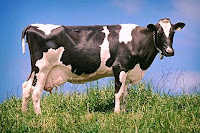.
 Dall Sheep
Dall SheepDall sheep, sometimes called thinhorn sheep, inhabit cliff regions in Alpine and Arctic tundra areas of Alaska and northern British Columbia. Related to the musk ox and the moutain goat, these sheep can have either black, gray, or white coats, depending on the subspecies.
 Douroucouli
DouroucouliThe douroucouli is the only species of monkey that is nocturnal. With its large eyes, it is well adapted to see at night, but it can not perceive colors.
 Dugong
DugongThis male dugong is among only a few thousand of the large marine mammals believed to remain in the Indian and western Pacific oceans. Dugongs, commonly called sea cows, have long been hunted for their meat, blubber, oil, and hide. The harmless animal uses its rounded forelimbs for locomotion and its muscular lips to tear water plants for food.
 Grévy’s Zebra
Grévy’s ZebraThe Grévy’s zebra (Equus grevyi) is the largest zebra, weighing up to 450 kg (990 lb). The vertical stripes on its body are narrow and close together, covering most of the body except the belly. Grévy’s zebra frequents the plains and brush country of Ethiopia, Somalia, and Kenya.
 Hippopotamus
HippopotamusThe hippopotamus divides its time between water and land. During the day, its unusually thin outer layer of skin wicks moisture away too quickly for the animal to remain out of water for very long. Instead of sweat glands, the skin has glands that secrete a thick, reddish fluid impenetrable by the sun’s burning rays; for this reason, hippos have been said to “sweat blood.” Hippopotamuses spend the night on land, foraging for the roughly 40 kg (88 lb) of food they consume a day.
 Holstein Cow
Holstein CowDairy farmers raise Holstein cows to produce milk. One Holstein cow can produce around 9,500 kg (21,000 lb) of milk in one year.
 Komondor
KomondorA komondor is a breed of working dog distinguished by a coat of long, corded white hair that feels like felt.
 Minke Whale
Minke WhaleThe small, lively minke whale is distinguished by a dark-and-light harlequin coloration, including white stripes across the flippers and upper back. When playing, a minke whale may breach, or leap out of the water, at a 45-degree angle, and then arch its back for a smooth reentry, or stretch out horizontally for a loud belly flop. These inquisitive whales sometimes appear alongside a ship, often keeping pace with the vessel for speeds up to 30 knots.
 Netherland Dwarf Rabbit
Netherland Dwarf RabbitThe Netherland Dwarf rabbit is one of the most popular breeds of pet rabbit.
 Nine-Banded Armadillo
Nine-Banded ArmadilloThe nine-banded or common long-nosed armadillo is the most widespread and adaptable of all species of armadillos. It ranges from the southern United States southward into Argentina and Uruguay and feeds on fungi, fruits, tubers, termites, ants, small vertebrates, and carrion.
< more pictures >
